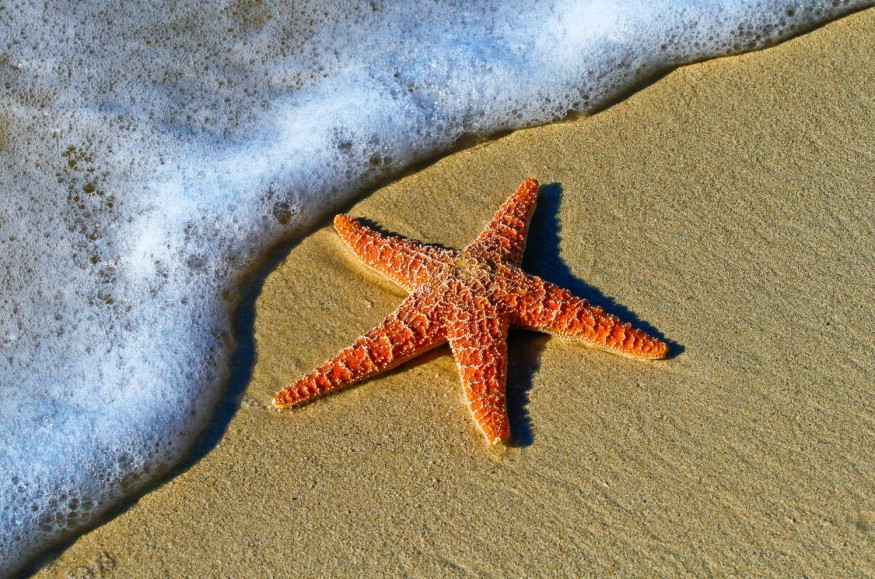A giant starfish was found by a woman along a Texas beach last week. The discovery rocked social media as some internet users were reportedly in awe after Christina Biery, a resident of Aransas Pass, uploaded photos of the sea star, whose body is like the size of her palm and arms longer than her hands.
The Texas giant starfish was still alive and intact when it was first seen, along with other smaller sea stars in the area.
Texas Giant Starfish

Biery was strolling near a jetty at Port Aransas around 1:00 p.m. local time on July 12 when she saw the giant starfish. She placed the other sea stars back into the water, according to USA Today, which reported that Texas local spotted around 10 of the marine invertebrates but one stood out among the rest. The starfish group was found amid a lot of seagrasses in the area.
Biery initially thought the largest sea star that day in Aransas Pass was dead. With this, she picked it up but placed it back in the sand and flipped it over to take a snap of its appendages and tiny suckers. She also relocated the sea creature near the water to prevent its predators such as birds or other animals from killing it, the said U.S. media outlet reported.
Also Read : Starfish Facts: Misnamed Stars of the Oceans
Gray Sea Star
The Texas sea animal is a gray sea star, according to Mark Fisher, from the Texas Parks and Wildlife's Coastal Fisheries Division, as cited by USA Today.
Unlike mammals and other vertebrates, starfish have no backbones and that is why they are called invertebrate animals, just like their close relative such as sea lilies and sand dollars. Sea stars are not technically classified as fish but are abundant in almost every coastal habitat, according to the website AZ Animals.
In the case of the gray sea star (Luidia clathrata), also called slender-armed starfish or the lined sea star, they can be found along the Gulf coast, particularly in shallow water, sandy, or muddy bottoms, according to the Texas A&M University at Galveston.
L. clathrate has a star-shaped body with five arms with a body color ranging from gray to light brown or dark gray. Its maximum size can reach 30 centimeters (12 inches) in terms of arm span, the Texas university adds.
Starfish Strandings
The seemingly starfish stranding along the Texas beach is only one of the many related incidents worldwide, which begs the question how do starfish wash up on shore?
According to the Natural History Museum (NHM), heavy storms, changing tides, high winds, and sea swell can affect offshore starfish populations and serve as factors as to why some of the sea stars end up on beaches, where they can temporarily survive but not for long, ranging from several seconds to minutes.
The survival time of stranded sea stars also depends on which species they belong to. In 2022, hundreds of the echinoderm starfish washed up along beaches in South Carolina, Newsweek reported.
© 2025 NatureWorldNews.com All rights reserved. Do not reproduce without permission.





